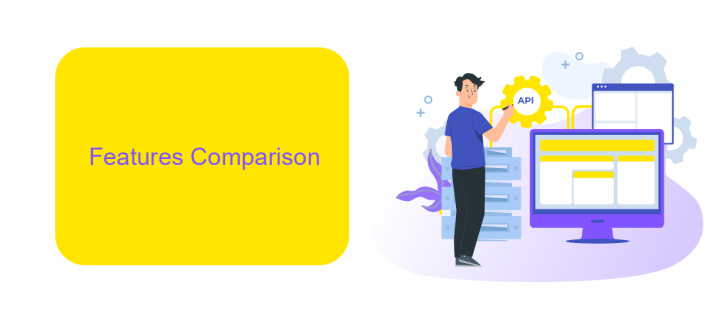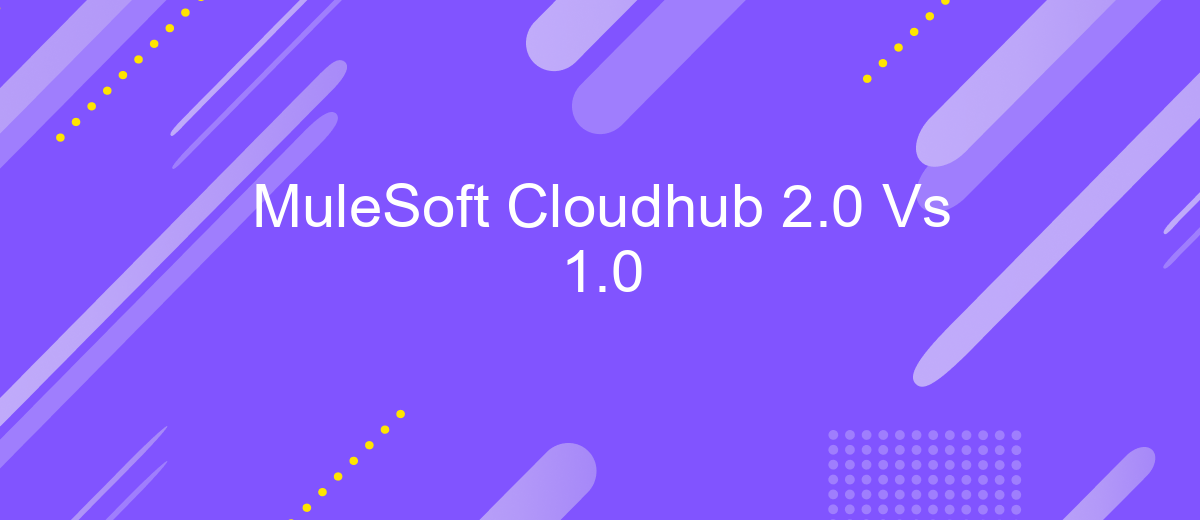MuleSoft Cloudhub 2.0 Vs 1.0
MuleSoft's CloudHub platform has been a cornerstone for seamless integration and efficient API management. With the release of CloudHub 2.0, significant advancements have been introduced, promising enhanced performance and scalability. This article delves into the key differences between CloudHub 2.0 and its predecessor, CloudHub 1.0, to help businesses understand the improvements and make informed decisions about their integration strategies.
Introduction
With the rapid evolution of cloud technologies, MuleSoft's CloudHub platform has also seen significant advancements. CloudHub 2.0 introduces a range of new features and improvements over its predecessor, CloudHub 1.0. Understanding these differences is crucial for businesses looking to optimize their integration strategies and leverage the full potential of MuleSoft's capabilities.
- Enhanced performance and scalability
- Improved security measures
- Advanced monitoring and analytics
- Streamlined deployment processes
- Integration with third-party services like ApiX-Drive for seamless automation
As organizations increasingly rely on cloud-based solutions, the need for efficient and reliable integration platforms becomes paramount. CloudHub 2.0 addresses these needs by offering a more robust and user-friendly environment compared to CloudHub 1.0. By incorporating third-party services such as ApiX-Drive, businesses can further enhance their integration capabilities, ensuring smooth and automated workflows across various applications and systems.
Features Comparison

MuleSoft Cloudhub 2.0 offers a significant upgrade over its predecessor, Cloudhub 1.0, with enhanced scalability and performance. The new version introduces advanced monitoring tools and improved deployment capabilities, making it easier for developers to manage and scale their applications. Additionally, Cloudhub 2.0 supports more robust security features, ensuring that data is protected at all times. These enhancements make Cloudhub 2.0 a more reliable and efficient platform for enterprise integration needs.
One of the standout features of Cloudhub 2.0 is its seamless integration capabilities, which are further enhanced by services like ApiX-Drive. ApiX-Drive simplifies the process of connecting various applications and automating workflows, reducing the time and effort required for integration. This makes it an invaluable tool for businesses looking to streamline their operations and improve productivity. Overall, the combination of MuleSoft Cloudhub 2.0 and ApiX-Drive provides a powerful solution for managing and optimizing integrations in a cloud environment.
Performance Enhancements

MuleSoft Cloudhub 2.0 introduces significant performance enhancements over its predecessor, Cloudhub 1.0. These improvements are designed to optimize the integration experience, making it faster and more efficient for businesses to connect their applications and data.
- Enhanced scalability: Cloudhub 2.0 offers better scalability options, allowing for seamless handling of increased workloads without compromising performance.
- Improved processing speed: The new version boasts faster data processing capabilities, reducing latency and ensuring quicker response times.
- Advanced resource management: With more efficient resource allocation, Cloudhub 2.0 minimizes downtime and maximizes uptime for critical integrations.
- Optimized API connectivity: Cloudhub 2.0 integrates more effectively with services like ApiX-Drive, streamlining the setup and management of API connections.
These performance enhancements in Cloudhub 2.0 empower businesses to achieve greater efficiency and reliability in their integration processes. By leveraging advanced features and improved resource management, organizations can ensure that their integrations run smoothly and deliver optimal results.
Architectural Changes

MuleSoft Cloudhub 2.0 introduces significant architectural changes compared to its predecessor, Cloudhub 1.0. One of the key enhancements is the shift towards a more scalable and resilient infrastructure, allowing for better handling of high workloads and ensuring minimal downtime.
Another notable change is the improved security measures. Cloudhub 2.0 incorporates advanced encryption protocols and multi-factor authentication, providing a more secure environment for data transmission and storage. These features address the growing need for robust security in cloud-based integrations.
- Enhanced scalability and resilience
- Improved security with advanced encryption and multi-factor authentication
- Optimized performance for high workloads
Additionally, Cloudhub 2.0 offers better integration capabilities with third-party services like ApiX-Drive, which facilitates seamless data transfer between various applications. This integration ensures that businesses can automate their workflows more efficiently, leveraging the strengths of both MuleSoft and ApiX-Drive for a more cohesive and streamlined operation.
Conclusion
In comparing MuleSoft Cloudhub 2.0 and 1.0, it is evident that Cloudhub 2.0 offers significant improvements in scalability, performance, and security. The enhanced features in Cloudhub 2.0 provide a more robust and flexible platform for managing integrations, making it a better choice for organizations looking to future-proof their integration strategies. The advancements in API management, monitoring, and deployment capabilities make it easier to streamline operations and reduce the complexity of maintaining integrations.
Moreover, for those seeking additional support in setting up integrations, services like ApiX-Drive can be highly beneficial. ApiX-Drive offers a user-friendly interface and a wide range of pre-built connectors, simplifying the process of integrating various applications and services. By leveraging such tools alongside MuleSoft Cloudhub 2.0, organizations can achieve seamless and efficient integration processes, ultimately enhancing their operational efficiency and agility.
- Automate the work of an online store or landing
- Empower through integration
- Don't spend money on programmers and integrators
- Save time by automating routine tasks
FAQ
What are the key differences between MuleSoft Cloudhub 2.0 and 1.0?
Can I migrate my applications from Cloudhub 1.0 to 2.0 easily?
What are the new monitoring capabilities in Cloudhub 2.0?
Is there a difference in pricing between Cloudhub 1.0 and 2.0?
Do I need to reconfigure my integrations when upgrading to Cloudhub 2.0?
Routine tasks take a lot of time from employees? Do they burn out, do not have enough working day for the main duties and important things? Do you understand that the only way out of this situation in modern realities is automation? Try Apix-Drive for free and make sure that the online connector in 5 minutes of setting up integration will remove a significant part of the routine from your life and free up time for you and your employees.


